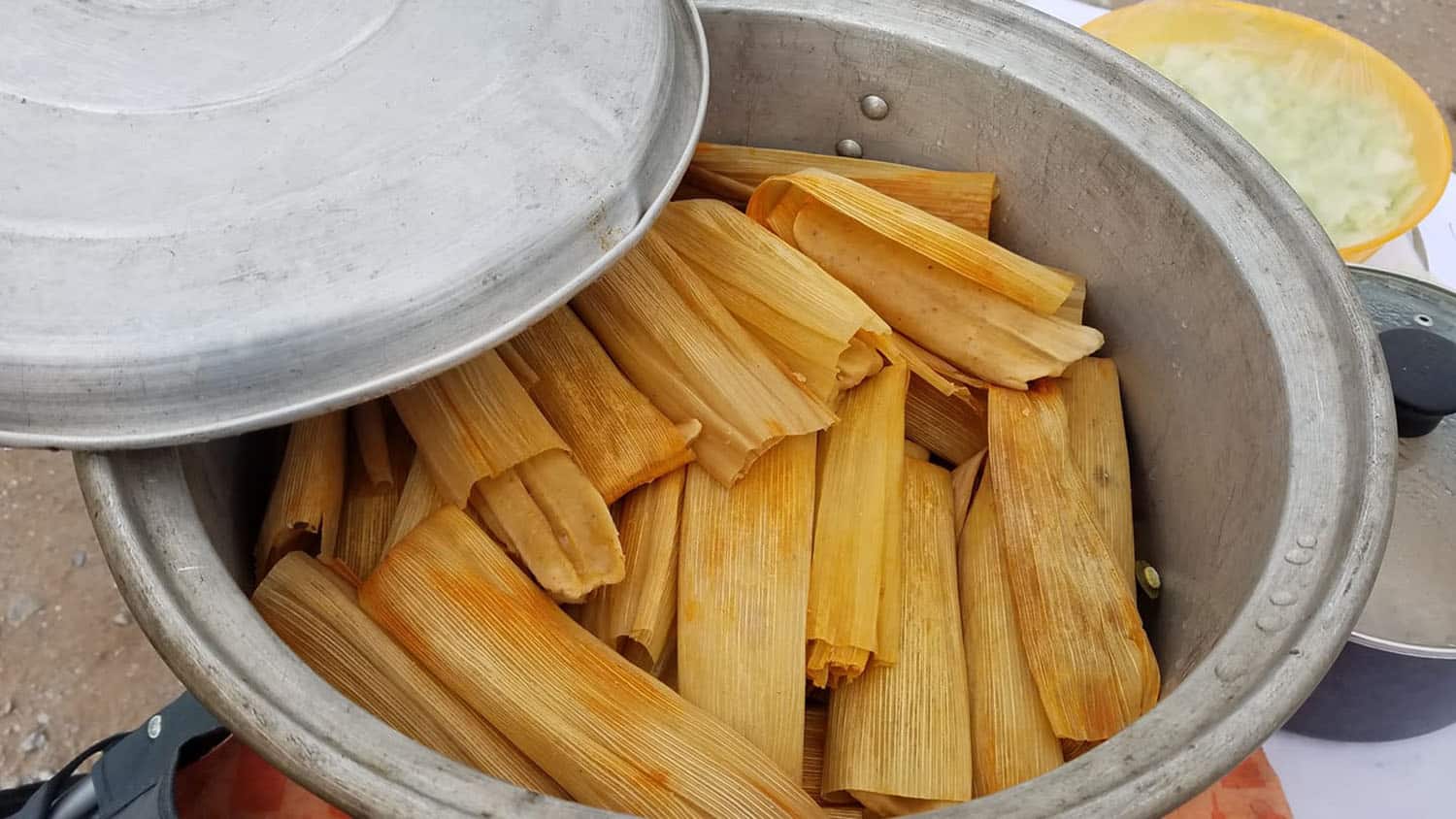[Editor’s Note: This post is part of a series designed to help people avoid foodborne illness during the holidays. You can find other posts in the series – on everything from eggnog to roasting a turkey – here.]
The holidays are a time for gathering with loved ones and sharing a meal. For many families those meals are going to include tamales. But nothing ruins a holiday like a case of foodborne illness, so we talked to NC State’s food safety experts to provide some tips on how to enjoy your tamales without making anyone sick.
Tamales are a holiday staple for many families with roots in Mexico and Central America. They’re made with a corn flour called masa, which is steamed in a wrapper made of corn husks or banana leaves. Tamales can be filled with pork, chicken, beans, cheese – almost anything. Most importantly, tamales are delicious.
Because we want folks to remember the deliciousness, and avoid any memories about being seriously ill, we talked with Ellen Shumaker, a food safety expert and outreach director of NC State’s Safe Plates program.
The Abstract: What are the potential food safety risks associated with making and serving tamales?
Ellen Shumaker: In the case of tamales that contain meat or poultry, one food safety risk is if they are not cooked thoroughly. Undercooked meat may contain bacteria that can cause illness such as Salmonella, E. coli, and Campylobacter. Also, any time you are handling raw meat or poultry, there is potential for cross contamination to occur in the kitchen through hands, utensils, or other items that could transfer bacteria from raw meat to ready-to-eat foods.
Another food safety risk is that many bacteria like to grow in foods containing cooked meats, beans and vegetables that are held at room temperature. Some of those bacteria produce a toxin that can make us sick, so leaving tamales out for long periods of time at room temperature increases the risk of foodborne illness.
TA: What can be done to minimize those risks during prep?
Shumaker: Washing your hands before and throughout food prep will reduce risk, particularly when washing hands after handling raw meat or poultry. Cleaning and sanitizing surfaces that come in contact with raw meat/poultry is also important.
TA: What can be done to minimize food safety risks during cooking?
Shumaker: Using a food thermometer to check the temperature of the tamales will reduce the risk of foodborne illness. We recommend using a digital, instant-read thermometer. Whole cuts of meat should be cooked to 145°F, ground meat should be cooked to 158°F, and poultry should be cooked to 165°F.
TA: I know that tamales are something that many people make in larges batches ahead of time. Do you have any food safety tips for people who will be storing their tamales and serving them later?
Shumaker: Refrigerating tamales within four hours of being at room temperature will reduce the risk of bacterial growth that causes illness. If you’re cooking tamales ahead of time and then storing them, I recommend storing the tamales in shallow containers and putting them into the refrigerator soon after cooking them – don’t worry, modern refrigerators can handle it! This ensures that the tamales will cool down quickly enough. If you put a lot of tamales into a large container while they are still warm, the innermost portion of the tamales may not cool down quickly enough, increasing the risk of bacterial growth.
- Categories:



